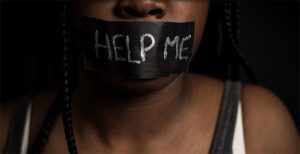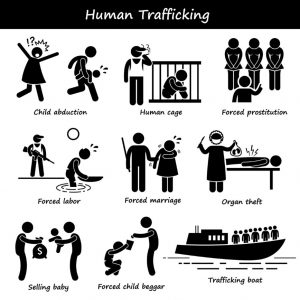The World Day Against Trafficking in Persons was celebrated not so long ago in a bid to raise awareness on the situation of human trafficking victims as well as the promotion and protection of their rights.
According to the United Nations, human trafficking is a crime that exploits women, children and men for numerous purposes including forced labour and sex. The International Labour Organization estimates that 21 million people are victims of forced labour globally and this estimate includes victims of human trafficking for labour and sexual exploitation.
Every country in the world is affected by human trafficking, whether as a country of origin, transit, or destination for victims. According to the United Nations Office on Drugs and Crime Global Report on Trafficking in Persons, children make up almost a third of all human trafficking victims worldwide. The report also adds that women and girls comprise 71 per cent of human trafficking victims.
Human traffickers prey on the most desperate and vulnerable. To end this inhumane practice, we must do more to shield migrants and refugees — and particularly young people, women and children — from those who would exploit their yearnings for a better, safer and more dignified future.
Another report by the International Labour Organization estimates that 21 million people are victims of forced labour globally.
According to a 2017 report released by the United States on Trafficking in Persons – released in June. The report listed 13 African countries as among the 23 worst offenders for human trafficking. Among the worst African offenders were Burundi, Central African Republic, Comoros, Democratic Republic of Congo, Congo, Equatorial Guinea, Eritrea, Guinea, Guinea-Bissau, Mali, Mauritania, South Sudan and Sudan.
The International Organization for Migration (IOM) recently warned that the sexual exploitation of African migrants in Europe has reached disturbing levels.
“Over the past three years, IOM Italy has seen an almost 600 per cent increase in the number of potential sex trafficking victims arriving in Italy by sea. This upward trend has continued during the first six months of 2017, with most victims arriving from Nigeria,” the report said.
Sadly, children make up almost a third of all human trafficking victims worldwide, according to the United Nations Office on Drugs and Crime Global Report on Trafficking in Persons with women and girls comprising 71 per cent of human trafficking victims in multi-billion dollar global enterprise.
It is important therefore that we combat human trafficking by not only improving the state of our economies which have given rise to this ill but also making efforts to bring culprits to book. We also need to empower women and girls to be able to tell the difference between genuine opportunities and traffickers as there is a very thin line between these two.

